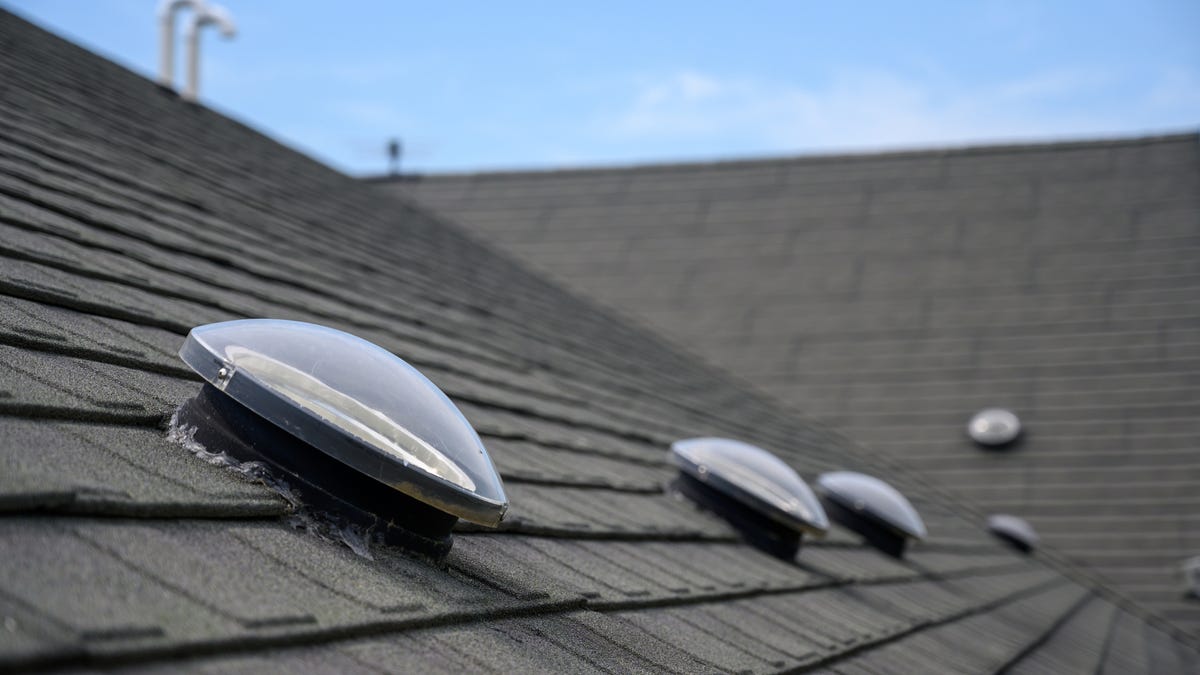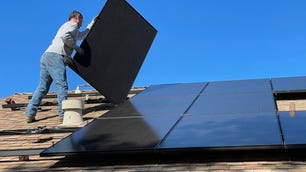How Solar Tubes Bring More Natural Light Indoors
These simple devices are an affordable, natural way to provide lighting for your home.

You don't need to install rooftop solar panels to add solar to your home.
The high inflation of the past few years, including significant increases in power bills, means it costs more and more to turn on the lights.
Solar panels are one way to take a bite out of those power bills, but they're expensive. Fortunately there's a much more affordable way to illuminate your home, at least during the day, without the glare of bright lights from a window or the ongoing cost of running an electric light.
Meet the solar tube.
Can solar panels save you money?
Interested in understanding the impact solar can have on your home? Enter some basic information below, and we’ll instantly provide a free estimate of your energy savings.
This natural, energy-efficient way to provide more natural light throughout your abode is growing in popularity. But is it the right fit for your home?
Here's a guide to understanding solar tubes, their pros and cons, and how they stack up against other choices like solar panels and skylights.
What are solar tubes?
Also known as a tubular skylight, sun tube, sun scope or light tube, solar tubes are made of reflective metal with an interior that's buffed. While they can range in diameter from 10 to 22 inches, they are most commonly 10 or 14 inches in diameter.
The solar tube is capped by a plastic globe on the roof, and ends in a diffuser that resembles a window in the room's ceiling. From the outside, the solar tube captures daylight that comes in through the globe and protects you from UV rays. On the inside, the tubes channel and diffuse the light into your home, which results in a dramatic, sheer glow.
At a glance, a solar tube might just look like a flat-mounted ceiling light, said Krupa Patel, a senior energy and sustainability engineer with Buro Happold, an engineering and design consulting firm. "However, the tubes often have bends, so the light is evenly diffused."
It can cost anywhere from $600 to $1,000 to get a solar tube installed, but that price can be lower if you install it yourself. But if your roof is made of a material other than asphalt -- like wood, metal or tile -- you might need to pay for adapters, adding to the cost.
Pros and cons of solar tubes
There are some pluses and minuses that come with installing solar tubes in your home:
Advantages
More sunlight: Solar tubes are a great source of solar lighting. Sunlight's vitamin D can improve your health and well-being, as can having sunlight in your home on its natural cycle. "It should help someone tuned to their circadian rhythm, and follow natural daylight patterns," Patel said. "It can really help your body sync with nature."
Less glare: "Because the solar tube is diffusing, there is significantly less glare compared to windows or skylights," Patel said.
Low installation cost: Solar tubes require a relatively small financial investment. They cost less than solar panels or skylights, they also don't require any tweaks to your framing or drywall.
Design flexibility: Because of their size, solar tubes are less noticeable than skylights.
Environmentally friendly: You can light up your home during the day without having to worry about contributing to carbon emissions or adding to your carbon footprint.
Lower energy costs: Tapping into natural energy can also reduce your power bill. This is especially true during the warmer, sun-filled months of summer.
Disadvantages
Backup sources of energy required: When the sun comes up, there is light in your home. When there's no or little sun, that means no or little lighting in your home. The controllability aspect is gone, and a backup light source for those times may be needed, Patel said.
"A homeowner might think that it's something they could rely on fully all the time," she said. "They provide light when there is light to be provided. So if it's nighttime or if it's a cloudy day, they won't do that."
Condensation and thermal bridging issues. Because solar tubes are made entirely of metal, you'll need to potentially deal with the impacts on the system from weather or extreme climate, Patel said. For example, thermal bridging can create issues with comfort and energy use, or condensation creating mold or damaging your walls.
Limited options in design. Solar tubes don't offer the same variety and versatility in design and aesthetics as skylights.
Lack of control. As solar tubes rely on the availability of sunlight, there's no way to control how much light is entering your room. It largely hinges on how much sun you're getting on a given day or time of year.
These 10-inch solar tubes, from skylight maker Velux, offer an affordable and simple way to bring the light of the sun into your home.
Solar tubes vs. solar panels
A major difference between solar tubes and solar panels is that solar tubes aren't a source of renewable energy. Solar types channel and diffuse existing natural light. Solar panels, on the other hand, absorb sunlight from the PV cells in the panel. This creates electrical charges and causes electricity to flow.
"Unlike solar panels, they don't 'power' anything -- they only give the appearance of providing power, by way of light," Patel said. "Solar tubes don't produce any electricity, and they don't produce light. A solar tube is just like a passageway to share light, whereas a solar panel actually converts solar heat into energy."
And should it be overcast or rainy, with solar tubes, you're out of luck and need to lean on backup lighting.
Solar panels require a significantly greater investment. The average cost to install solar panels is around $20,000 after federal solar tax incentives.
Solar tubes vs. skylights
Whereas solar tubes are typically 10 or 14 inches in diameter, skylights can vary in size. It's usually more expensive to install skylights, and installation for a single skylight can range from $1,000 to $3,000. Skylights can be huge, and take up most of your roof, if you like, Patel said. Another difference between solar tubes and skylights is that skylights offer a direct view into the skyscape.
"[With a skylight], you look up, you see the outside, you see the sun if it's shining or raining or cloudy," Patel said. "Whereas solar tubes are often not like that. The depths usually have a bend in them, and intent is to get light through and not necessarily a view."
"Solar tubes can be more applicable because they are smaller," Patel said. "They can fit into a few more places and you might not have a ton of rooftop available."
The best natural lighting option for your home depends on a handful of factors, such as budget, lighting needs, where you live, and aesthetic and design preferences.



